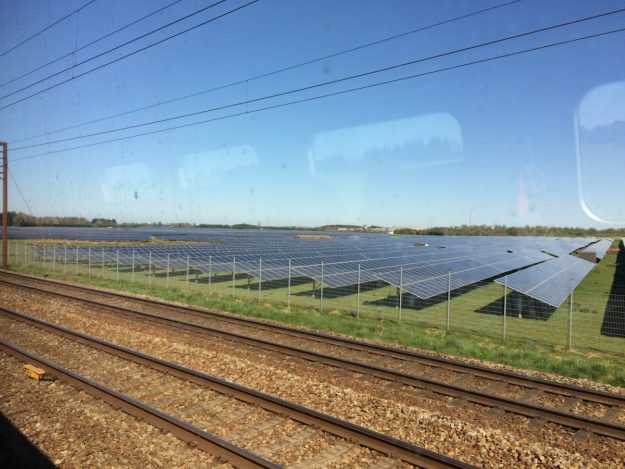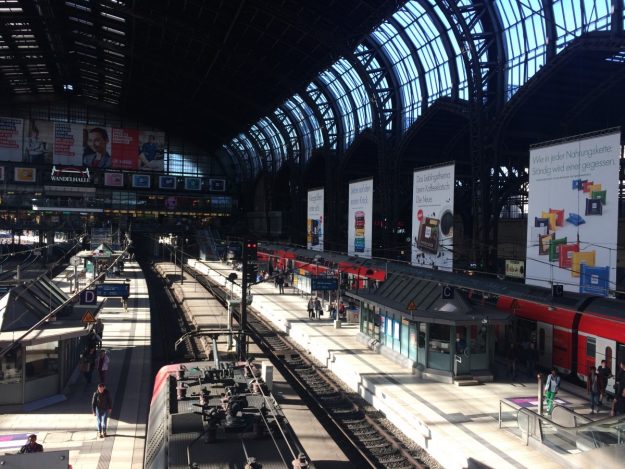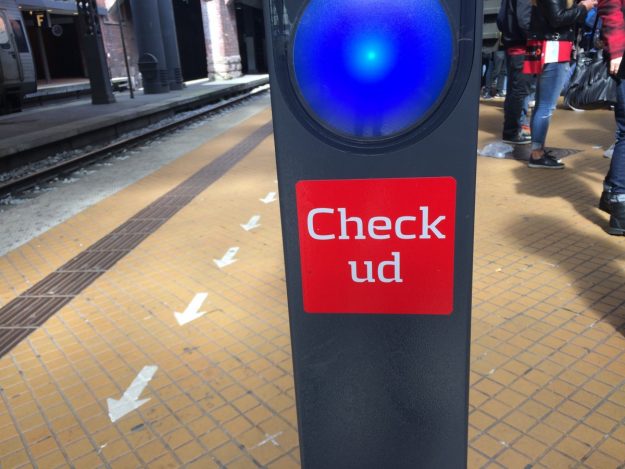Blog post and pictures by David Nilsson
Travelling by train should not be understood as an inferior alternative to the plane. Trains should not even try to compete with planes. Trains can offer something different, something unique, something which is sorely needed among professionals: time for yourself. This is the value of slow motion.
Am I nuts? So, I am travelling to London from Stockholm for a three-day work session… by train? It takes two days there and two days back, including an over-night hotel stay in Hamburg both ways. It costs my employer around €1,200 or at least three times the cost of a flight ticket. Seriously?
This incident of economic insanity of course has its background. It is called climate change. Our failure to meet the necessary reductions of GHG emissions is out in the open. We’re heading full speed towards 2 or 3 degrees of global warming. We know this; still the polluters keep polluting. Air travel is increasing fast on a global scale and I just don’t want to be part of that trend.
Air travel might only be contributing a few percent of the greenhouse effect. But our flying is emblematic of the carbon-fuelled lifestyles that are really the problem. After all, it is the most carbon-intensive activity (per time unit) you can undertake as a human being. A particularly sad state of affairs is that the scientific community that brought us all the undisputable facts about global warming, is at the same time one of the biggest emitters. Being a successful scholar means jetting all over the world between conferences, guest appearances, exchange visits and field work. This undermines our legitimacy badly. If scientists don’t follow their own advice, why should anyone else?

Trains instead of planes. Some say that the train is not so much better for the climate than the aeroplane. This may be true in some exceptional cases, e.g. if planes running on renewable fuels are compared with coal-powered trains. But in the majority of cases, with current technology, the train is far better. No need for additional proof here, let’s just work with this fact for now. The question is then: is it possible to be a successful scholar without using the aeroplane? Or to succeed in any kind of international career for that matter?
Obviously, many physical meetings can be replaced with virtual meetings. Skype, Hangout and WhatsApp are examples of tools that already have changed how we interact and collaborate over distance. In preparing for this trip I have already used two of them. But they did not replace my trip. We will have more digital interaction, but there will still be instances we need to travel. Can the train really be an alternative for others than green fanatics? Simply put: what is the business case for attracting professionals to do long-distance travel by train?

Capturing the value of slow motion. In a recent doctoral thesis at KTH, Stefan Tongur showed that when new technology enters the market, commercial actors often try to exploit them through already established business models. The problem is that the value offered by new technology– in Tongur’s case electrical road systems – cannot be captured using the old business models. On the other hand, commercial actors can pack existing technologies into new business models, thus capturing value brought about by changed value perception among the users. Netflix, Uber and RyanAir are well-known examples of this.
Railway technology is as old as industrial society itself. Today’s high-speed trains with air-conditioned coaches equipped with wi-fi and espresso machines are really just incremental innovations, mimicking both airplanes and the urban cafe. But the new and untapped value lies elsewhere. It lies in our insatiable desire for more time. In a world where we live our lives constantly online, surrounded by more and more time-saving devices, having enough time to do things slowly has become a luxury. The lack of time for reflection stands out as a problem every year in staff surveys at KTH. In our quest for organisational efficiency and instant needs fulfilment, the ”click society” offers no time for slow thinking, for concentrated work without distractions, or for just enjoying sensorial experience from our physical surrounding. Train travelling, with its fixed time tables and train changes offers a script for doing precisely this.

The future of professional travel. With the right business models, railway technology doesn’t have to improve one bit to capture the value of slow motion. But today long distance trains seems to be nobody’s business. Large organisations such as universities must demand better services from their travel agencies, in terms of train booking and trip planning, along with personalised accommodation, and why not; suggestions on good restaurants and sights along the way.
Travelling by train should not be understood as an inferior alternative to the plane. Trains should not even try to compete with planes. Trains can offer something different, something unique, something which is sorely needed among professionals: time for yourself. This is the value of slow motion.

As I am finishing this text I am on the EuroStar bound for London. The journey so far has not been without its hitches but on the whole it has been incredibly valuable. Two full days of undisturbed slow working, enjoying great scenery, everyday life and curious food at my stops in Copenhagen, Fredericia, Hamburg, Hannover (where I nearly missed the connection), Köln and Brussels. The trip generated a nice suite of photos on my Facebook page, and a string of surprised, envious or supportive comments. This is luxury after all.
This is the second time I travel long-distance by train. I will do it again, because it offers value that other parts of my professional life cannot. Perhaps it can inspire a colleague or two but they have to make their own decisions. The real challenge for me up ahead is that one trip per year I make for field studies in Uganda and Kenya. I managed to cut down from two or three annual trips by engaging local universities instead, which has added a lot of value. I hope one day to travel to Mombasa by cabin hire on a container ship, work for 6 months in the region and then glide back, in slow motion. Imagine the amount of work, and all the thinking I could do, in 6 weeks on a cargo carrier. Is that the future of professional travel? Who knows.
 David Nilsson
David Nilsson
Researcher, Division of History of Science, Technology and Environment
Director of WaterCentre@KTH
KTH Royal Institute of Technology


Dear David, thank you for sharing. You made me recall the chinese “li”, used to measure geographical distance. This length of a “li” has varied throughout history and was finally deter- mined as 500 metres in 1929. Before this, a li had differing lengths depending on the condition of the road being measured: a li on an uphill road was considered shorter than a li on a downhill one. I like that.
In the mountainous Nepal, people never speak of distance as a length, counting distance in time: first take the bus for seven hours, and then walk for two days. When traveling to and from the small island where I live, I do not think of it as 35 kilometers or 19 nautical miles, I conceive it as 2,5 hours of ferry ride which I can use to read and study and think.